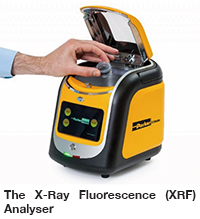Parker Kittiwake’s new condition monitoring software
10/07/2018
Parker Kittiwake has launched new condition monitoring software to provide in-situ analysis of the sulphur content of fuel oil for compliance testing. Because the X-Ray Fluorescence (XRF) Analyser is able to analyse a small fuel sample in less than three minutes, ship owners and Port State Control (PSC) are given the ability to conduct laboratory-standard testing on site, before non-compliant fuel is bunkered and before a vessel carrying non-compliant fuel leaves port.
Because the X-Ray Fluorescence (XRF) Analyser is able to analyse a small fuel sample in less than three minutes, ship owners and Port State Control (PSC) are given the ability to conduct laboratory-standard testing on site, before non-compliant fuel is bunkered and before a vessel carrying non-compliant fuel leaves port.Traditional methods for confirming compliance with sulphur limits rely on paperwork requirements such as the bunker delivery note (BDN). This can significantly increase the risk of non-compliance and subsequent penalties for ship owners, also exacerbating the environmental impact of burning fuel with a higher sulphur content.
In addition, the delay incurred by laboratory analysis creates the risk that the vessel may have left port with non-compliant fuel on board, or may require non-compliant fuel to be de-bunkered and compliant fuel re-bunkered, incurring significant delays and additional costs.
The XRF Analyser aims to tackle these problems. It allows fuel to be easily sampled at any stage of the bunkering process. Test results can be stored electronically, allowing operators to manage compliance audits more efficiently.
In addition to sulphur testing, the XRF Analyser can be used to measure a range of wear metals in lubricating oil, allowing operators to quickly identify potential damage in cylinder liners, bearings, piston rings, gears, stern tubes and hydraulic systems.
Test results are displayed as a percentage on an LCD screen, avoiding ambiguity and mitigating the risk of human error caused by operators needing to interpret the test data.